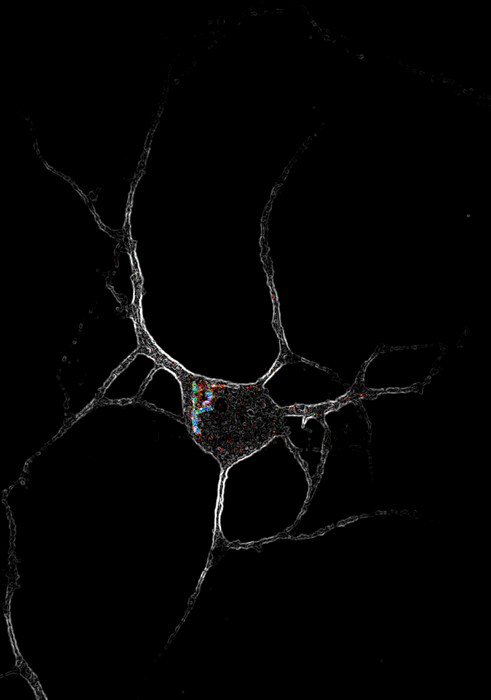Location, location, location is the key for psychedelic drugs that could treat mental illness by rapidly rebuilding connections between nerve cells. In a paper published Feb. 17 in Science, researchers at the University of California, Davis show that engaging serotonin 2A receptors inside neurons promotes growth of new connections but engaging the same receptor on the surface of nerve cells does not.

Credit: David Olson/UC Davis
Location, location, location is the key for psychedelic drugs that could treat mental illness by rapidly rebuilding connections between nerve cells. In a paper published Feb. 17 in Science, researchers at the University of California, Davis show that engaging serotonin 2A receptors inside neurons promotes growth of new connections but engaging the same receptor on the surface of nerve cells does not.
The findings will help guide efforts to discover new drugs for depression, PTSD and other disorders, said senior author David E. Olson, associate professor of chemistry, biochemistry and molecular medicine and director of the Institute for Psychedelics and Neurotherapeutics at UC Davis.
Drugs such as LSD, MDMA and psilocybin show great promise for treating a wide range of mental disorders that are characterized by a loss of neural connections. In laboratory studies, a single dose of these drugs can cause rapid growth of new dendrites – branches – from nerve cells, and formation of new spines on those dendrites.
Olson calls this group of drugs “psychoplastogens” because of their ability to regrow and remodel connections in the brain.
Earlier work from Olson’s and other labs showed that psychedelic drugs work by engaging the serotonin 2A receptor (5-HT2AR). But other drugs that engage the same receptor, including serotonin, do not have the same growth effects.
Maxemiliano Vargas, a graduate student in Olson’s lab, Olson and colleagues experimented with chemically tweaking drugs and using transporters to make it easier or harder for compounds to slip across cell membranes. Serotonin itself is polar, meaning it dissolves well in water but does not easily cross the lipid membranes that surround cells. The psychedelics, on the other hand, are much less polar and can easily enter the interior of a cell.
They found that the growth-promoting ability of compounds was correlated with the ability to cross cell membranes.
Drug receptors are usually thought of as being on the cell membrane, facing out. But the researchers found that in nerve cells, serotonin 2A receptors were concentrated inside cells, mostly around a structure called the Golgi body, with some receptors on the cell surface. Other types of signaling receptors in the same class were on the surface.
The results show that there is a location bias in how these drugs work, Olson said. Engaging the serotonin 2A receptor when it is inside a cell produces a different effect from triggering it when it is on the outside.
“It gives us deeper mechanistic insight into how the receptor promotes plasticity, and allows us to design better drugs,” Olson said.
Additional authors on the paper include: from UC Davis, Lee Dunlap, Chunyang Dong, Samuel Carter, Robert Tombari, Lin Tian, John Gray, Shekib Jami, Seona Patel, Lindsay Cameron and Hannah Saeger; Joseph Hennessey and John McCorvy from the Medical College of Wisconsin, Milwaukee. The work was supported by grants from the National Institutes of Health and the Camille and Henry Dreyfus Foundation, and by a sponsored research agreement with Delix Therapeutics.
Journal
Science
DOI
10.1126/science.adf0435
Method of Research
Experimental study
Subject of Research
Cells
Article Title
Psychedelics promote neuroplasticity through activation of intracellular 5-HT2A receptors
Article Publication Date
17-Feb-2023
COI Statement
D.E.O. is a co-founder of Delix Therapeutics, Inc., serves as the chief innovation officer and head of the scientific advisory board, and has sponsored research agreements with Delix Therapeutics. Delix Therapeutics has licensed technology from UC Davis. The sponsors of this research were not involved in the conceptualization, design, decision to publish, or preparation of the manuscript.




